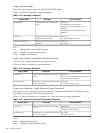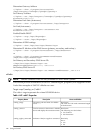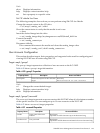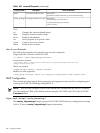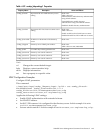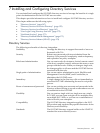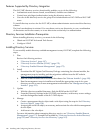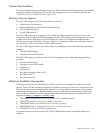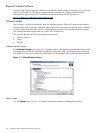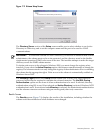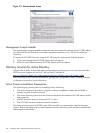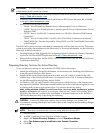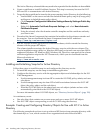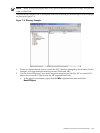
Features Supported by Directory Integration
The iLO 2 MP directory services functionality enables you to do the following:
• Authenticate users from a shared, consolidated, scalable user database.
• Control user privileges (authorization) using the directory service.
• Use roles in the directory service for group-level administration of iLO 2 MP and iLO 2 MP
users.
To install directory services for the iLO 2 MP, a schema administrator must extend the directory
schema.
The local user database is retained. You can choose not to use directories, to use a combination
of directories and local accounts, or to use directories exclusively for authentication.
Directory Services Installation Prerequisites
Before installing directory services, you must do the following:
• Obtain an iLO 2 MP Advanced Pack license.
• Configure LDAP.
Installing Directory Services
To successfully enable directory-enabled management on any iLO 2 MP, complete the following
steps:
1. Plan
Review the following sections:
• “Directory Services” (page 147)
• “Directory Services Schema (LDAP)” (page 179)
• “Directory-Enabled Remote Management” (page 173)
2. Install
a. Download the HP Lights-Out Directory Package containing the schema installer, the
management snap-in installer, and the migrations utilities from the HP website
(http://www.hp.com/servers/lights-out).
b. Run the schema installer once to extend the schema. See“Schema Installer” (page 150).
c. Run the management snap-in installer and install the appropriate snap-in for your
directory service on one or more management workstations. See“Management Snap-In
Installer” (page 152).
3. Update
a. With the directory-enabled firmware, flash the ROM on the iLO 2 MP
b. From the Directory Settings in the iLO 2 MP user interface, set directory server settings
and the distinguished name of the iLO 2 MP objects.
4. Manage
a. Create a management device object and a role object using the snap-in. See“Directory
Services Objects” (page 158).
b. Assign rights to the role object, as necessary, and associate the role with the management
device object.
c. Add users to the role object.
For more information about managing directory service, see “Directory-Enabled Remote
Management” (page 173). Examples are available in: “Directory Services for Active Directory”
(page 152) and “Directory Services for eDirectory” (page 163).
148 Installing and Configuring Directory Services



